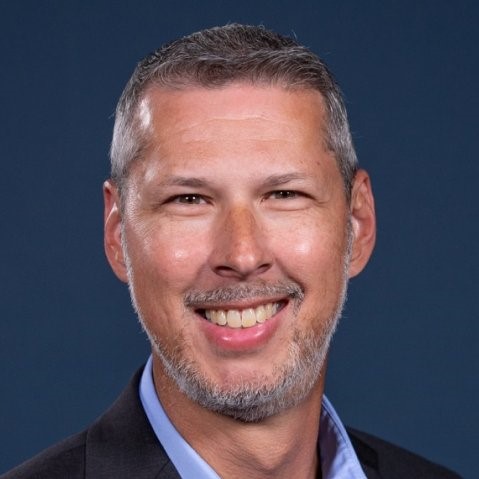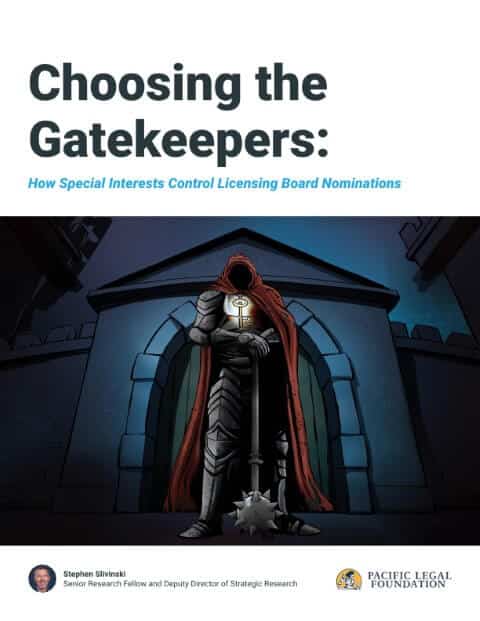Choosing the Gatekeepers:
How Special Interests Control Licensing Board Nominations

Stephen Slivinski
Senior Research Fellow and Deputy Director of Strategic Research

Download Full PDF Version
Table of Contents
Summary
- Private industry controls the majority of seats on most occupational licensing boards across the United States. These active market participants can easily outvote any public members on the board, who are essentially powerless to counter insider interests.
- In dozens of states, industry members on public licensing boards are effectively hand-picked by private industry. In fact, state laws require the governor to choose board members only from a list created by the industry’s professional association.
- This study, the first of its kind on this subject, shows that in 96 instances in 23 states for 17 licensed occupations, special-interest associations directly choose the pool of candidates for appointments to the public licensing board. These associations have incentives to keep licensing barriers high in order to reduce competition from new or innovative providers.
Background
One out of every four workers is not allowed to do their job without an official state-issued license. Licensing boards, using government power, control the marketplace for services in their industries. Researchers have emphasized the large number of licensed occupations and their burdensome requirements.1 Department of the Treasury Office of Economic Policy, Council of Economic Advisers, & Department of Labor, “Occupational licensing: A framework for policymakers” (Washington, DC: White House, 2015), 1-77.
These boards enforce occupational licensing laws and often can create their own rules. They can penalize existing license holders and reject new workers from entering the profession.
The boards are mostly composed of individual license holders in the industry, as required by law. In some instances, seats are reserved for members of the public as a check on the industry insiders. The public seats, however, are usually a small minority. The industry representatives can easily outvote them. In fact, the minority is often so small that the board could have a quorum without any public member being present. Furthermore, these public seats can go years without being filled, being deemed unnecessary for board business.2 Rebecca Haw Allensworth, “Foxes at the Henhouse: Occupational Licensing Boards Up Close,” California Law Review 105, no. 6 (2017): 1,567-1,613,
Members of state licensing boards are usually appointed by the governor or are nominated by the governor and then confirmed by the legislature. State law requires that members meet certain qualifications, such as industry experience or holding an existing license in good standing.
In some states, however, there is a more restrictive and consequential requirement: The governor may only choose board appointments from a list of candidates provided by the professional associations of the industries. Some statutes explicitly name which of these incumbent special interests shall provide the lists or require that the lists contain only three or four names. In some cases, the professional association holds an election open only to existing licensees, and then the governor must rubber-stamp the winners.
The Gatekeepers Choose Themselves
Stacking a licensure board with members who tend to share the biases of the trade association creates several problems—and it is unlawful.
It encourages gatekeeping against new workers and discourages entrepreneurship.
Licensing boards often have substantial power to determine the fate of entrepreneurs and workers, and they often abuse it.
- They usually have the power to interpret state licensing law, which may sometimes be ambiguous, and they use their interpretations to restrict new licenses.
- They can reject applicants (often with little deliberation) for lacking “good moral character,” and they often do so with little deliberation, deciding against an applicant who has ever been arrested or served time in jail, even for a misdemeanor.
- They can assess penalties on existing license holders (again with little deliberation or evidence), which could have an intimidating effect.
- They can issue cease-and-desist letters to providers of a related service that the board interprets as being under their authority, even if that purview is unclear in state law.
A lack of checks on these powers increases the likelihood of board decisions that keep out new competitors, burden existing licensees, and thwart innovative business models with unnecessary or overly aggressive enforcement.
It violates a Supreme Court decision.
In a 2015 decision, North Carolina State Board of Dental Examiners v. Federal Trade Commission, the Supreme Court of the United States found that requiring a majority of the board members to be “active market participants” creates a conflict of interest that equates to anticompetitive behavior by the state government and that is actionable in a court of law.
Furthermore, the Court ruled that state governments must carry out robust oversight of board activities and structure. The Court’s majority noted, “[w]hen a State empowers a group of active market participants to decide who can participate in its market, and on what terms, the need for supervision is manifest.”3 N.C. State Bd. of Dental Exam’rs v. FTC, 135 S. Ct. 1101 (2015). Very few states, however, have made changes to board structure or executive oversight to comply with this decision. This failure likely opens the states to litigation in cases on these grounds, and a sovereign antitrust exemption (which lets states have their own monopolies) cannot be used as defense.
It violates established separation of powers principles.
Legislative powers belong to the legislature. It is unfortunate enough that legislatures have outsourced rulemaking to licensing boards, even within the limited extent that states may regulate the right to work. Here legislatures have established regulators who are not democratically accountable. For these regulatory bodies, the industry chooses its own insiders as members. When licensing board members limit the right to work or abuse their authority, they normally cannot be fired, and nobody can vote them out.
Giving the industry so much of a role in selecting members reduces transparency and weakens the ability of both the public and the state government to oversee the board or hold it accountable. Although the public usually can access records regarding the nomination process from public bodies, it has little or no ability to learn why or how a private industry association determined the list of potential board nominees.
Findings: The Scope of the Problem
This study illustrates the scope of the problem across 50 states for 17 occupations that are governed by a licensing board. Among those occupations, 23 states effectively hand over the power of nominating the private sector board members to a trade association for at least one board.
For people seeking a license in any of these 17 occupations, there are 96 specific instances across all 50 states in which the license would be issued and regulated by a board at least partly hand-picked by special interests.
The states with the largest number of occupations regulated by boards on which private sector members are recommended by a trade association are Louisiana (12 occupations), Alabama (11 occupations), Mississippi (10 occupations), Kentucky (9 occupations), Oklahoma (8 occupations), Maryland (8 occupations), and North Carolina (8 occupations).
Trade associations most frequently direct the selection of private sector board members for the following occupations: podiatrists (10 states), accountants (9 states), psychologists (9 states), dentists (8 states), nurses (8 states), and optometrists (8 states).
The table illustrates these findings.
Conclusion
As a more mobile workforce becomes a permanent feature of the modern economy, state policymakers have a compelling interest to keep their labor markets as open as they can. This pro-growth policy should be coupled with due diligence in the wake of a Supreme Court decision that effectively revokes antitrust protection for state government in any judicial proceedings that challenge a licensing board if it is dominated by active market participants.
A board selection process that explicitly hands control to market participants to limit their own competition should be a ripe and obvious target of reform. The cleanest reform of the selection process would be one that allows governors to consult with a trade association if they wish but would not require the governor to choose any of the recommended nominees. See the model legislation in Appendix A.
Appendix A: Model Legislation –
Democratic Accountability in Board Appointments Act
Whereas, some states require their governor to select new members of occupational boards and commissions from a list of candidates provided by the board or self-interested professional associations; and
Whereas, this method of selection undercuts democratic accountability, violates the separation of powers, and increases the risk of cronyism and regulatory capture of such boards; and
Whereas, a democratically accountable officer making the appointments must be responsible for the actions of licensing boards in a meaningful way so that people know whom to hold responsible if the board takes actions they dislike; and
Whereas, restricting the appointment of licensing board or commission members to a slate of candidates chosen by insiders will tend to restrict and perpetuate candidates who support the incumbents’ regulatory preferences; and
Whereas, the appointment of board or commission members without biased selection criteria promotes the public interest over the interests of incumbent boards, commissions, or self-interested professional associations.
Therefore, be it enacted:
Section 1: Notwithstanding any other state law, the appointing authority for any state board or commission is not restricted in his or her selection of qualified candidates for appointment by lists or other nominations generated by the board or commission at issue or by leaders or groups within any professional or other association.
Section 2: Preexisting laws that require the appointing authority to select candidates for appointment for state boards or commissions from a list generated by another person or entity shall have no force or effect, except that the appointing authority is free to consider recommendations for appointment from any individual or group in the state.
Appendix B: Methodology
This study identifies the state statutes governing the appointment of licensing board members. It notes when a governor must choose his or her appointments to the seats reserved for professional members only from a list provided to the governor by a specific professional association, often named in statute, for that licensed occupation.
In most of these cases, the law states that the governor “shall” appoint from a “list” provided by the professional association. In some states, the professional association sends the governor the names of those elected by the association members in an open vote by existing license holders in the state (provided the winners meet the qualifications to serve on the board). In all of these cases, the process is deemed a captured nomination process.
Other statutes are not deemed a captured process. These include statutes that state a governor “may” appoint someone from an association list or that the governor must only “consult with” or “seek recommendations” from professional associations. Some statutes explicitly permit the governor to ignore a provided list.
The chart and dataset group these instances by occupation, not by occupational board. That is because several professions may be regulated by the same board, such as medicine, barbering, and cosmetology. Because occupational licenses are issued on an individual basis, the chart and dataset are constructed from the perspective of whether those seeking to enter the profession in a state would face a board dominated by industry interests.
The numbers here should be construed as the minimum number of professions in each state where the board is dominated by the industry influence described in this study. All of the states license additional occupations that were not assessed in the study, and those occupations might also have similar influence. Furthermore, even when the governor is not required to appoint industry insiders by law, the governor may still do so in many cases.
Why were these occupations chosen?
Occupations were included in the table if (1) they are licensed in all 50 states and (2) the licensing board for them exists as an executive branch entity (including cases in which they are part of a larger department, such as a department of health or a department of professional regulation) or executive-adjacent entity (such as an examining board). In all cases, the board has some form of direct power over the restriction of entry into the occupation in the state.
Several professions and occupational titles that are licensed in all 50 states were not assessed. Some of these include attorneys, financial planners, and insurance agents. That is because the regulation of entry into these occupations either occurs outside of an executive branch agency or licensing board (as is the case for attorneys, whose permission to practice is regulated by the judicial branch) or is directly regulated by an executive branch department that is not an appointed board (such as the department of insurance or financial services, which has executive branch accountability and may be subject to federal statutes with which states must comply). Regulatory capture by self-interested professions is problematic in these industries, too, but for different reasons.
Data and citations available upon request.
About The Author
Stephen Slivinski
Stephen is Pacific Legal Foundation’s deputy director of strategic research and a senior research fellow who specializes in analysis of business regulation and occupational licensing.
Acknowledgements
The author wishes to thank Alexandre Jund, Olivia Naughton, and Michelle Wu for their invaluable research assistance.

PLF is a national nonprofit legal organization that defends Americans’ liberties when threatened by government overreach and abuse. We sue the government in court when our clients’ rights protected by the Constitution are violated, and advocate for legislative and regulatory reforms in the other branches of government. Started in 1973 in California, PLF now seeks reform across the country, including suits filed nationwide, scoring precedent-setting victories for our clients, with an unmatched track record at the United States Supreme Court.